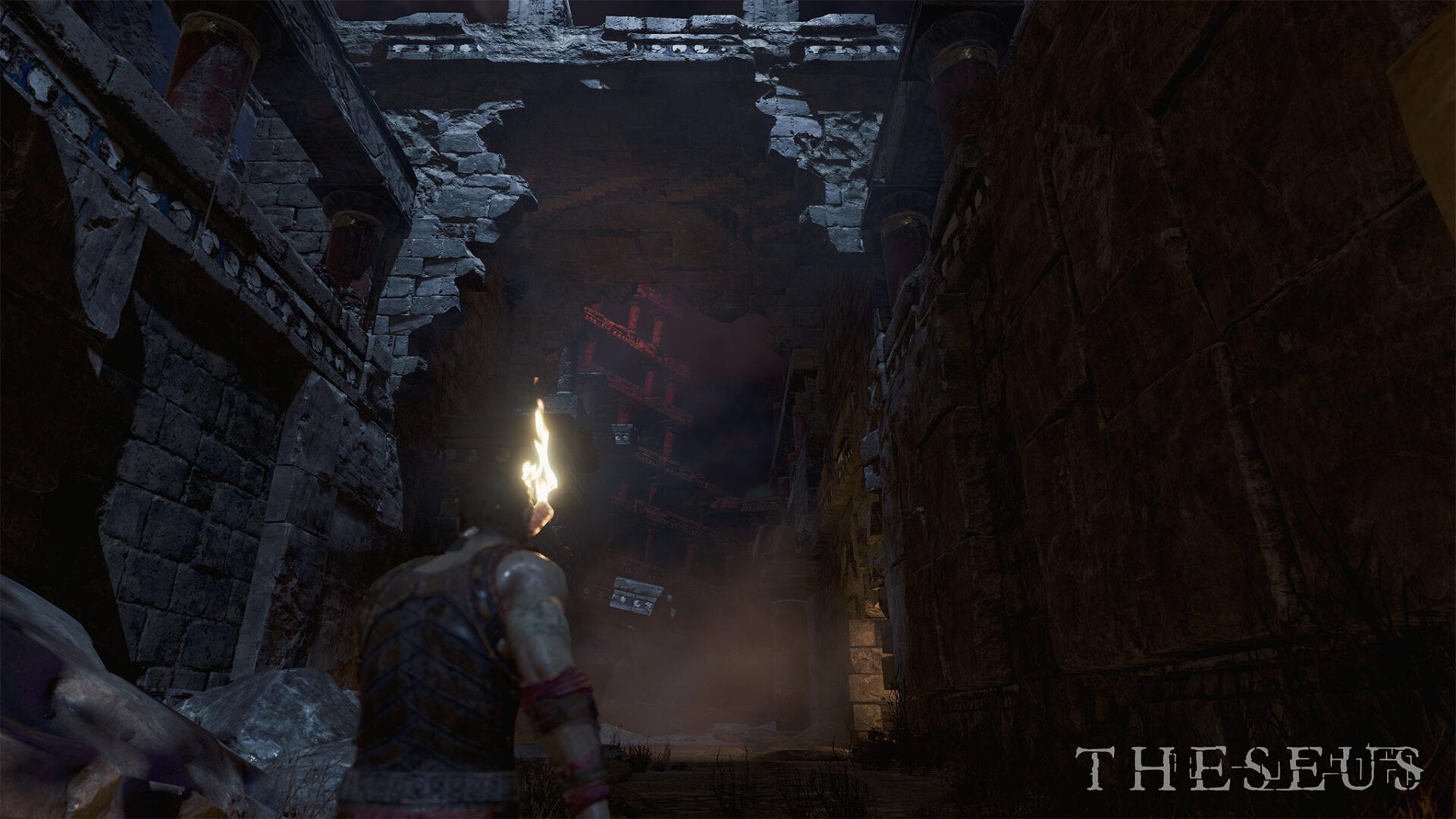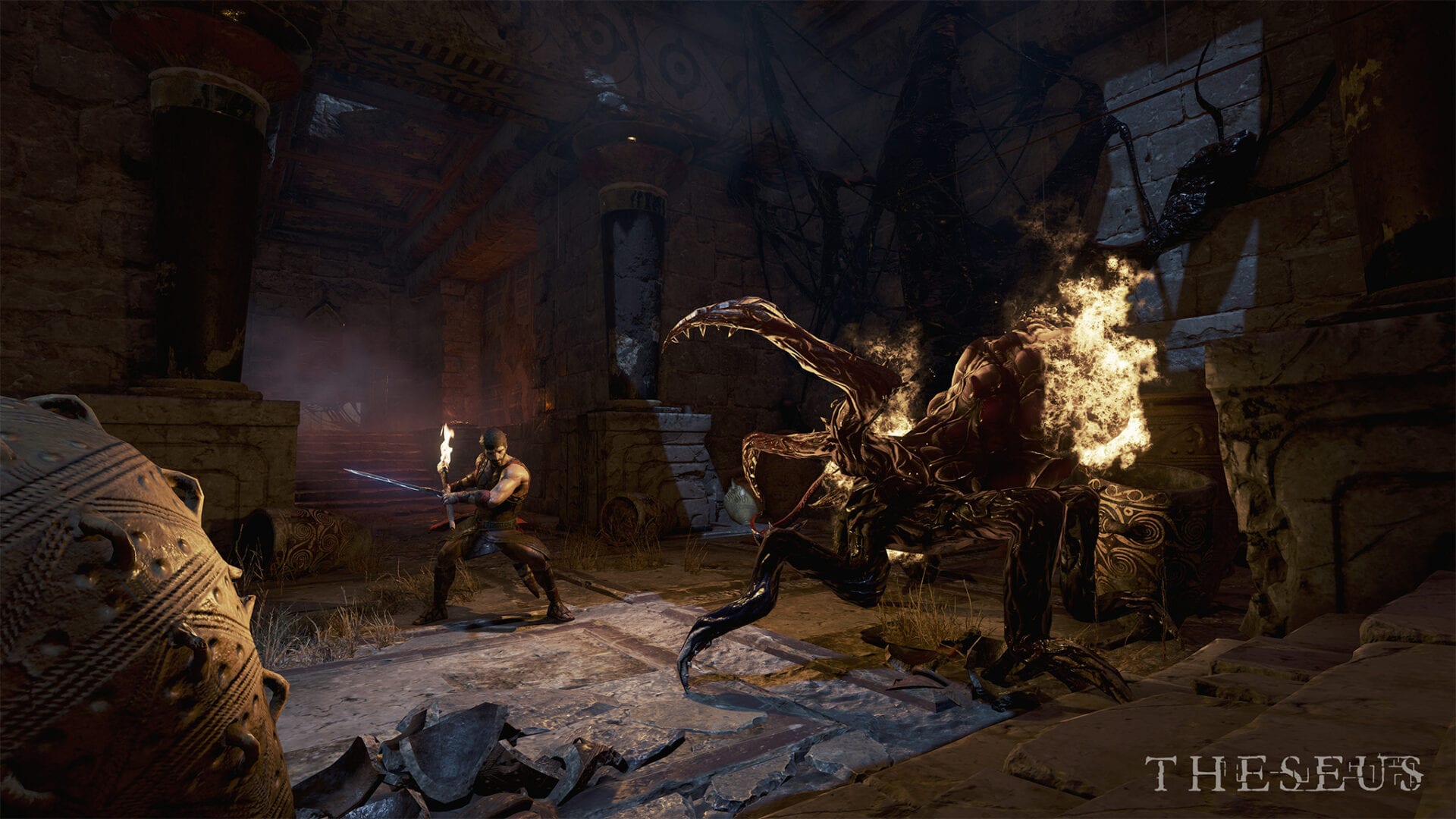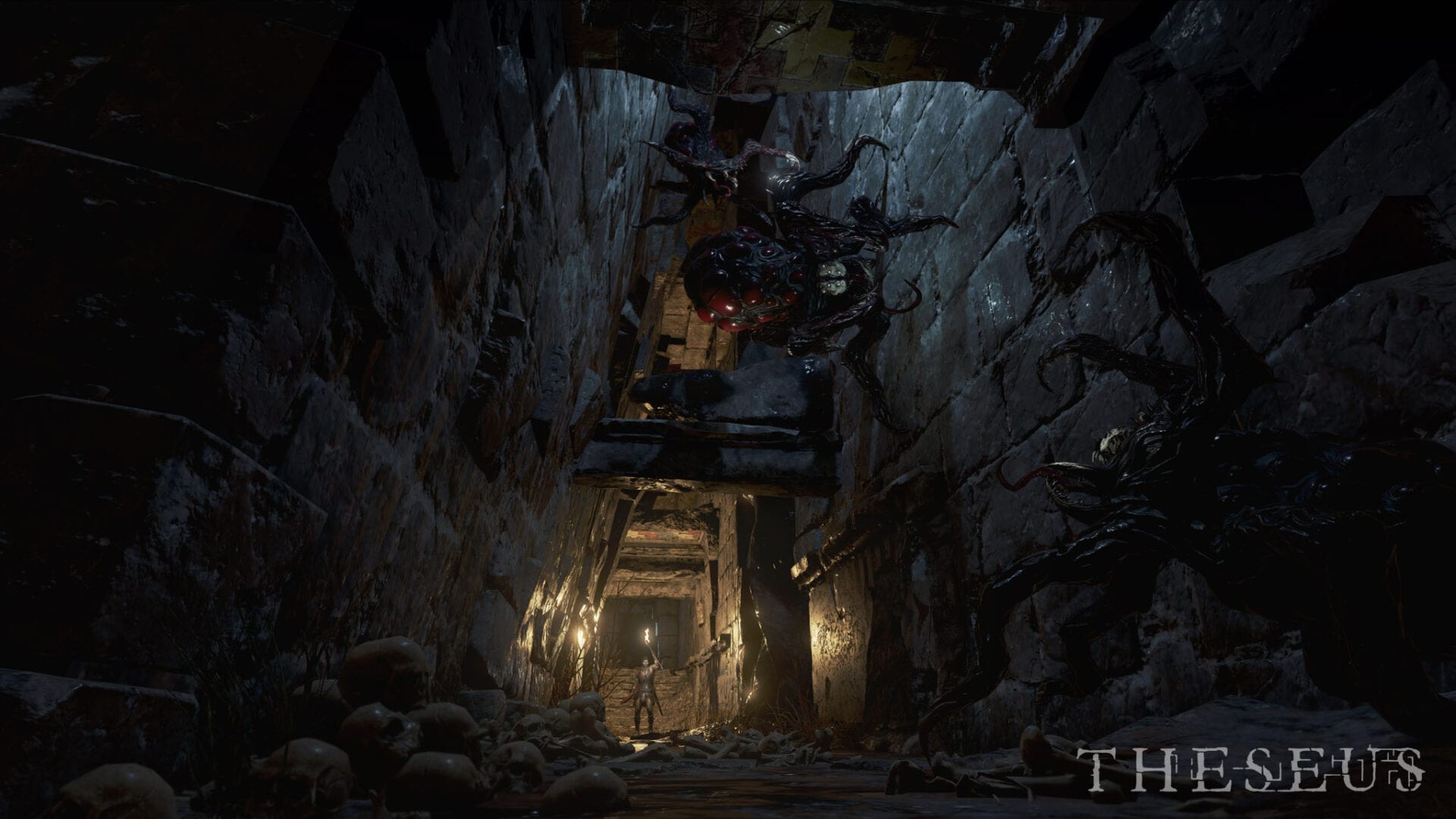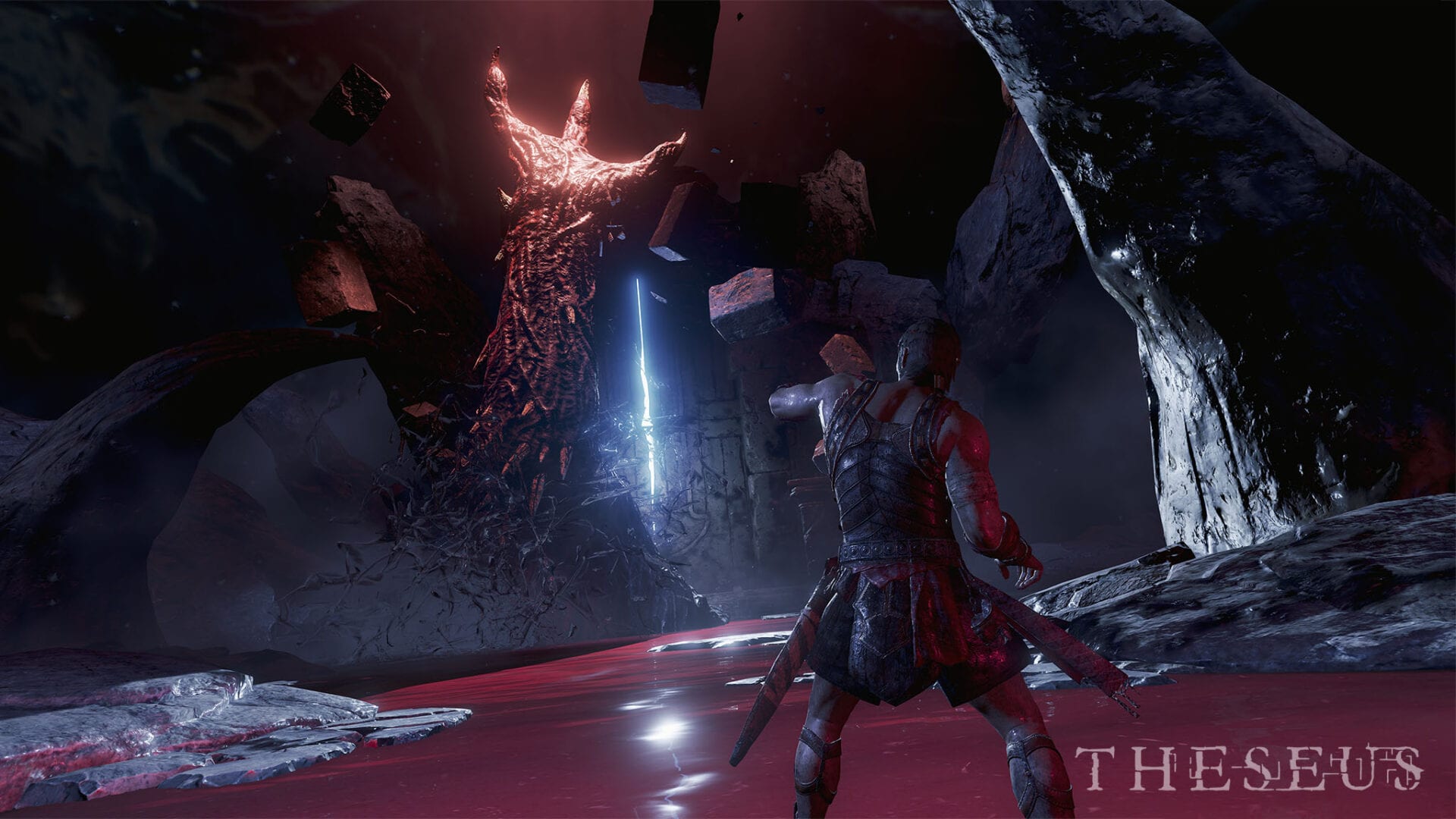Theseus, the latest project from developer Forge Reply, is the story of the mythical Greek legend Theseus (obviously) and his confrontation with the Minotaur, the giant beast that is part man, part bull, and full-time badass.
As this is a PSVR game, you’ll need a PS4, a DualShock 4, and (spoiler) the PSVR headset. And no, before you ask, it is not compatible with the AIM Controller. Apparently, assault rifles are criminally underused in Greek Mythology.
As you can see from the gameplay video I took above, Theseus resembles a third-person action adventure game, not unlike Uncharted or God of War. But that’s not really what this is. It is mostly a stealth game with the occasional adventure sequences, told with a cinematic flair. The third-person perspective is notable, considering it’s a VR game, and for the most part, it works. This design choice did not come without its vaults, however. As you wander the great halls, each new room had the potential to change the camera angle. And I don’t mean a little change like over the left shoulder here and the right shoulder there, I mean from a wide view that was almost birds-eye, to a tight over the shoulder camera angle. Occasionally, you would walk down a dark hallway with the camera looking just over Theseus’s right shoulder. As you walk through a crumbling stone doorway, the camera would suddenly teleport to the other side of the hall, forcing you to walk towards the camera.

While this is not an unheard of technique, it was the first time I had experienced it in VR. I actually don’t remember the last current generation game I played with a locked camera. Of course, you can look where ever you want by virtue of simply turning your head and looking about, but the camera itself is static. In other words, the camera is where it is, and no amount of twiddling the right stick is going to change it. It wasn’t a deal breaker for me, but it isn’t ideal. This is just one of the instances where it is obvious that Forge Reply focused more on the cinematic and less on the gameplay.
As legend has it, the mighty Minotaur wanders what was once a great hall, but is now just a crumbling maze of rubble and dark tunnels called the Labyrinth. It is this Labyrinth that the majority of the game takes place. As the titular character, you are guided by a female spirit through the maze. She warns you when the mighty beast is near and gives the occasional helpful hint. Eventually, you’ll find a torch and even a sword, but you are only allowed to use these in certain areas. I found it slightly frustrating that I couldn’t pull out my sword whenever I wanted. There is something comforting about walking down a dark hallway with your sword in hand. Plus, it was a “tell”. If you can’t pull out your sword, then you know there are no bad guys coming. It was just another example of Forge Reply’s focus on the cinematic and less on the gameplay.

Besides the iconic Minotaur, there is sadly only one other foe in the game. As this is a virtual reality game, I probably don’t even need to tell you what that foe is: giant man-sized spiders, of course. Game developers have apparently taken it upon themselves to permanently scar us arachnophobes. At one point, before I had found a sword, I found myself walking through a tunnel so dark, not even my torch could pierce it. The only sound was dripping water and the skittering of hundreds of feet. Not human feet, which would have been bad, but spider feet, which is so much worse. The torch did little to light the way, but at least it did keep the spiders at bay. Scenes like this really work for me, if only from the aforementioned cinematic perspective.
When the spiders finally do attack, the combat is simple and straightforward. Slash with the square button and wave your torch with the triangle button. There are no combos to unlock and no upgrades to be had. When it comes to the Minotaur, the game becomes a stealth dungeon crawler. Your sword would do no damage to the giant creature. You’ll need to learn its patterns and sneak just under its nose, for there may be other ways to bring down the mighty creature. When the mythical beast does come roaring onto the screen, it is a real treat in VR. Easily my favorite part of the game.

It took me less than four hours to complete the game, but Forge Reply says there are two endings depending if you found the right collectibles. I don’t know what those collectibles are, or if I found them, but the ending I got was pretty satisfying, if not a bit Sisyphean. I’m adding Greek myths on top of Greek myths so it must be time to wrap this up. In the end, Theseus is part action-adventure, part stealth and part cinematic experience. Unfortunately for this reviewer, the part I looked forward to the most, the action-adventure portion of the game, is the weakest. It is not terrible, but it is simply too basic and too repetitive to keep one entertained for the long haul. Luckily, the engaging visuals, and to a lesser degree, the story, kept me playing until the end.
Theseus PS4/PSVR Review
-
Overall - Not Bad - 5.5/105.5/10
Summary

Theseus is an epic cinematic experience, with action-adventure gameplay mixed with tense stealth sequences. Sadly, the simple controls and basic gameplay don’t keep up with the amazing visuals.
Review Disclaimer: This review was carried out using a digital copy of the game provided by the publisher. For more information, please read our Review Policy.
Reviewed using base PS4.















